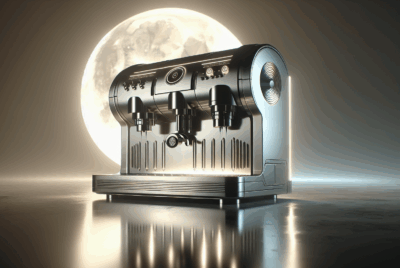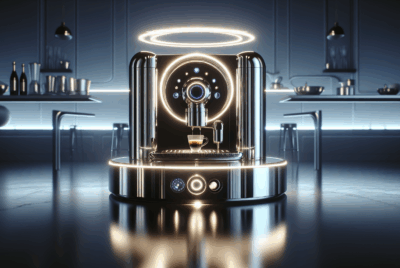Espresso Beans vs Coffee Beans: A Detailed Comparison
As an Amazon Associate, I earn from qualifying purchases, at no additional cost to you. Disclaimer
Introduction
As a coffee enthusiast, I am often asked, “What’s the difference between espresso beans and coffee beans?” or “Which one should I choose?” Well, if you’ve also found yourself pondering these questions, you’re in for a treat. In this article, we will delve into the fascinating world of espresso beans vs coffee beans.
Understanding Coffee
Coffee, for many of us, is the elixir of life. We love the warmth it brings, the conversations it sparks, and the comforting ritual it gives us each morning. But do we really know what’s behind our beloved brew?
What are Coffee Beans?
Coffee beans are the seeds of the coffee plant, Coffea. This tropical plant has over 120 species, but Coffea Arabica and Coffea Robusta are the most commonly consumed worldwide.
The Coffee Plant
Coffee plants are evergreen shrubs or small trees that grow best in high-altitude regions near the equator. They produce cherries that, when ripe, are handpicked, processed, and dried. Inside these cherries are what we call coffee beans.
The Harvesting Process
Harvesting coffee is a meticulous process. The cherries are handpicked, ensuring only the ripe ones are collected. They are then processed either by the dry or wet method before the beans are extracted, dried, and sorted.
What are Espresso Beans?
In contrast, espresso beans are not a different variety of coffee beans but a specific preparation of them.
The Espresso Making Process
Espresso is prepared by forcing hot water under high pressure through finely ground, compacted coffee. It’s a concentrated form of coffee, often served in small amounts but packed with flavors and aromas.
The Difference Between Coffee Beans vs Espresso Beans: An In-Depth Exploration
Now that we’ve covered the basics, let’s delve deeper into the differences between espresso vs coffee beans. As a fervent coffee enthusiast and advisor, I’ve personally experimented with a myriad of beans and brewing methods. By sharing my own experiences and findings, I hope to enlighten those of you who have never made espresso at home before, and are eager to give it a try.
The Roasting Process: Where the Magic Begins
The most noticeable difference between espresso beans vs coffee beans lies within the roasting process. Espresso beans are generally subjected to longer roasting periods than coffee beans, resulting in what we call a darker roast. Picture this: the longer the beans are roasted, the darker they become, and the more oils they release. These oils give the espresso its characteristic robust and bold flavor.
As a coffee lover, I’ve always been fascinated by this transformation process, and the impact it has on the taste of my brew. I once visited a local coffee roastery and witnessed the beans turning from green to dark brown. I learned that the roasting method impacts not just the color but also the taste of the coffee. If you ever have the chance to visit a local roastery, I highly recommend it!
Espresso Beans vs Coffee Beans Taste and Flavor Profiles
Because of their roasting levels, espresso and coffee beans also have varying flavor profiles. Espresso beans are known for their full body and robust flavors, typically possessing a heavier and richer taste with hints of caramel or chocolate.
On the other hand, coffee beans, particularly those that are lightly roasted, have a wider range of flavors. You might pick up hints of fruit, flower, or even wine in some specialty coffee varieties!
Once, I remember brewing a lightly roasted Ethiopian coffee, and was surprised by its bright and fruity notes. It was a stark contrast to the full-bodied, caramel-infused espresso shot I was used to in the mornings. If you’re new to coffee making at home, trying out different beans can be an exciting journey of flavor discovery!
Caffeine Content: Debunking the Myth
One of the most common misconceptions I’ve come across is the belief that espresso contains more caffeine than regular coffee. However, the truth is a tad more complicated.
While it’s true that espresso is more concentrated, and therefore has more caffeine per milliliter, it’s usually served in smaller amounts. So, a shot of espresso actually contains less total caffeine than a standard cup of coffee.
When I first started brewing espresso at home, I remember being surprised that I wasn’t bouncing off the walls with energy! Understanding caffeine content can help you decide whether to go for an espresso or a regular coffee, particularly if you’re sensitive to caffeine.
When navigating the world of espresso beans vs coffee beans, understanding these differences can help you make a more informed decision about which beans to purchase and how to brew your coffee.
Choosing Between Espresso Beans vs Coffee Beans
Ah, the question that has been the center of countless coffee shop debates – should one opt for espresso beans or coffee beans? As a coffee enthusiast, and having been on my own journey of brewing and tasting, I’m here to offer some guidance to those who have never made espresso at home before and are contemplating this choice.
Your Taste Preference: Honing in on Your Palate
When it comes to choosing between espresso vs coffee beans, a significant factor that swings the decision is your taste preference. If you’re a fan of bold, rich flavors that pack a punch, then espresso beans might be your ideal choice. The first time I made espresso at home, I remember being intrigued by its robust flavors and fuller body. It felt like a warm, welcoming hug in a tiny cup!
However, if you lean towards exploring the diverse flavors and aromas that coffee can offer, then coffee beans should be your go-to. They can range from bright and fruity, to nutty and chocolatey, depending on their origin and roast level. A personal favorite of mine is a medium roast Colombian coffee, which offers a delightful balance of acidity and sweetness.
My advice here? Don’t be afraid to experiment. Try different varieties and roasts, and take note of what you enjoy.
Your Brewing Method: A Matter of Equipment
Your brewing method also plays a significant role in determining which type of beans you should choose. If you’ve invested in an espresso machine and have the patience and desire to perfect your espresso shots, then you should opt for espresso beans. Espresso machines require finely ground beans and work under high pressure, perfect for extracting the rich flavors of espresso beans.
I remember when I first brought home my espresso machine. The learning curve was steep, but the satisfaction of pulling a perfect espresso shot was well worth it. Trust me when I say that there’s nothing quite like the aroma of fresh espresso wafting through your home!
However, if you’re more inclined towards methods like drip, pour over, or French press, then regular coffee beans would be the better choice. These brewing methods are a bit more forgiving and can bring out the nuanced flavors of coffee beans beautifully.
One personal tip I can share is to match your grind size to your brewing method. A common mistake beginners make is using the wrong grind size. Espresso requires a fine grind, while methods like the French press require a coarse grind.
In the end, choosing between espresso beans vs coffee beans is a journey of personal exploration. Both have unique qualities and can offer different experiences.
The Best Way to Enjoy Your Espresso or Coffee: From Novice to Connoisseur
There’s a common saying amongst us coffee lovers: the best cup of coffee is the one you enjoy the most. There’s a wealth of truth in this statement, and as someone who has spent countless hours brewing and savoring both espressos and regular coffee at home, I’m excited to share some tips that I’ve discovered along the way.
Espresso Beans vs Coffee Beans Preparation Tips: Crafting Your Perfect Brew
My number one advice for enjoying your espresso or coffee to the fullest extent is to grind your beans just before brewing. Freshly ground beans can significantly enhance the taste of your coffee, providing a burst of flavors that pre-ground coffee often cannot match.
I still remember the day I got my first coffee grinder. The smell of fresh coffee grounds filled my kitchen, promising a flavorful cup of joe. That cup was a revelation, and I’ve never looked back since. Investing in a good grinder is a decision you won’t regret.
Another crucial tip to ensure a satisfying coffee experience is to get your water temperature right. A good rule of thumb is to use water heated to around 195 to 205 degrees Fahrenheit. This range is generally considered ideal for extracting the best flavors from your coffee beans. Too hot, and your coffee might taste bitter; too cool, and you could end up with a weak, under-extracted brew.
Serving Suggestions: Personalizing Your Experience
Once you have your freshly brewed espresso or coffee, how you enjoy it is entirely up to you. Some prefer their espresso neat, savoring the rich, concentrated flavors. Others might add a dash of frothed milk to create a creamy latte or cappuccino.
If you’re brewing coffee, you might enjoy it black, allowing the nuanced flavors of the beans to shine. Alternatively, you might prefer adding some milk or creamer.
Don’t be shy to explore different coffee recipes as well. I’ve had fun experimenting with different coffee concoctions, from affogatos (a scoop of vanilla ice cream drowned in a shot of hot espresso – divine!) to homemade iced caramel macchiatos.
One personal anecdote I’d love to share happened when I hosted a coffee tasting at my place. I prepared the same coffee three ways – as an espresso, as a pour-over, and as a French press brew. My friends and I were amazed at how different the same coffee could taste when brewed differently. So, don’t hesitate to play around with various brewing methods!
Conclusion
To sum it up, the best way to enjoy your espresso or coffee is to make it a personal and enjoyable journey. Experiment with different beans, brewing methods, and recipes. Adjust and tweak until you find that perfect cup that makes you smile with every sip. Whether it’s espresso beans or coffee beans, your choice ultimately depends on your personal preference and how you enjoy your coffee. Both have unique characteristics that can cater to different taste buds.
Happy brewing!
Frequently Asked Questions (FAQs)
1. Can I use coffee beans for espresso?
Absolutely! The type of beans you use for espresso is dependent on your taste preference.
2. Are espresso beans darker than coffee beans?
Yes, typically espresso beans are roasted for longer, which results in a darker roast.
3. Is the caffeine content the same in espresso and coffee?
Not exactly. Espresso has a higher concentration of caffeine, but because of its serving size, it has less total caffeine than a standard cup of coffee.
4. Can I use espresso beans in a regular coffee maker?
You can, but the flavor might be stronger and bolder than what you’re used to with regular coffee beans.
5. Which beans are better, coffee or espresso beans?
Neither is inherently better than the other. It’s all about personal preference!




